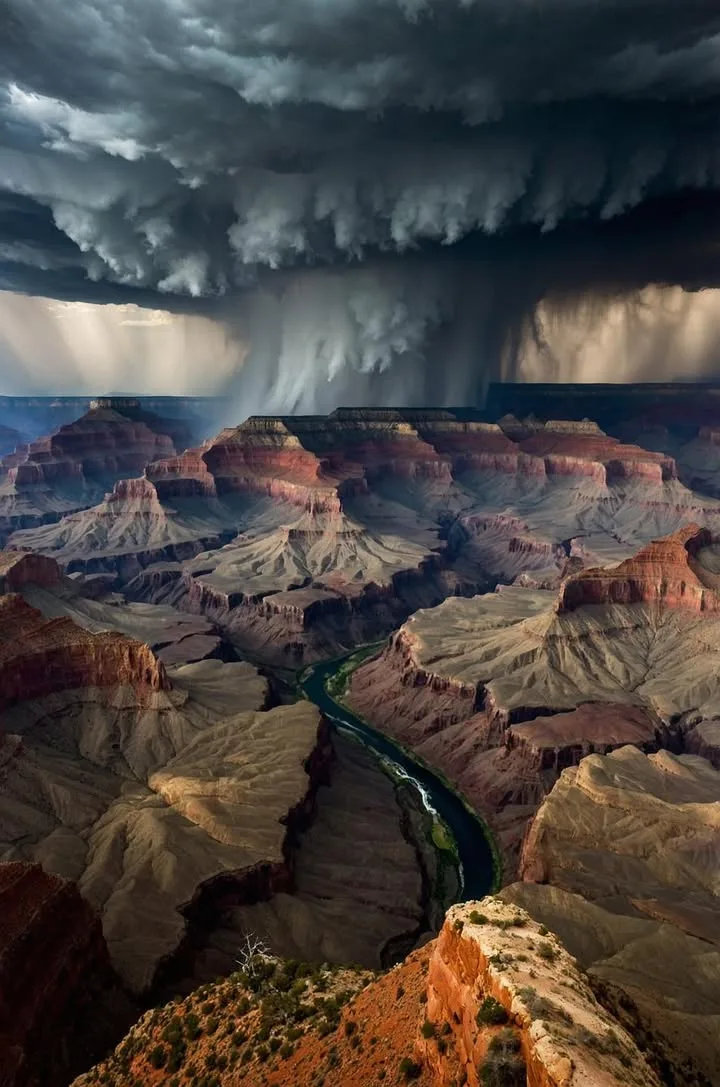There are places on Earth that defy imagination, and the Grand Canyon is undoubtedly one of them. Carved by the forces of nature over millions of years, this colossal chasm in Arizona is a testament to the power of time and water. If you’ve ever stood on its rim, you know the feeling: a humbling sense of scale that puts everything into perspective. If you haven’t, a journey into this geological masterpiece is a must-add to your bucket list.

A Geological Masterpiece
The story of the Grand Canyon is literally written in its walls. For nearly two billion years, layers of rock have been laid down, uplifted, and finally, carved away by the relentless force of the Colorado River. The river began its incredible work about 6 million years ago, a powerful, sediment-filled chisel slicing through the rock layers of the uplifted Colorado Plateau. What we see today is a cross-section of Earth’s history, a vibrant, multi-colored timeline with rocks at the bottom nearly as old as the planet itself. The sheer magnitude of the canyon—over 277 miles long, up to 18 miles wide, and over a mile deep—is a staggering result of this geological process, a slow-motion carving that continues to this day.
A Tapestry of Human History
While the canyon’s geological story is ancient, its human history is just as rich. Native American tribes, including the Havasupai, Hualapai, Hopi, and Navajo, have lived in and around the canyon for thousands of years, holding a deep spiritual and cultural connection to this land. Their ancient pictographs and dwellings are a constant reminder that this place has been home for generations. The canyon first captivated the attention of Europeans in 1540 with the arrival of Spanish explorers, but it was in the late 19th century that it truly became a national treasure. Thanks to the passionate advocacy of figures like President Theodore Roosevelt, the Grand Canyon was designated a National Park on February 26, 1919, securing its protection for future generations.
Exploring the Grand Canyon: Your Ultimate Guide
Planning a trip to the Grand Canyon can be as simple or as adventurous as you’d like.
The South Rim: The most popular and accessible part of the park, the South Rim is open year-round. It’s home to the majority of the famous scenic overlooks, like Mather Point and Hopi Point, offering classic panoramic views. A free and convenient shuttle bus system makes getting to the various viewpoints a breeze, especially during peak season when parking is scarce. Don’t miss a walk along the paved Rim Trail for easy-to-access, spectacular vistas.
Hiking: For those who want to venture below the rim, iconic trails like the Bright Angel Trail and South Kaibab Trail offer a challenging but rewarding descent into the canyon’s inner world. Remember, hiking into the canyon is a strenuous activity—the real challenge is the climb back up! For serious hikers, overnight trips require a backcountry permit.
Other Adventures: Beyond hiking, the park offers a range of unique experiences. Take a guided mule trip down into the canyon for a truly classic experience, or for the ultimate thrill-seeker, a multi-day whitewater rafting trip down the Colorado River is an adventure of a lifetime.
Important Update: North Rim Closure
The park has two main entrances, the South Rim and the North Rim. Please be aware that as of August 2025, the North Rim is closed for the remainder of the season due to damage from the Dragon Bravo Wildfire. While the North Rim offers a more remote and forested experience, the South Rim provides a more than ample and unforgettable Grand Canyon adventure.
Whether you’re marveling at the vibrant sunsets that paint the canyon walls or hiking a switchback trail, a visit to the Grand Canyon is a powerful reminder of the incredible forces that shape our planet. It’s more than just a large hole in the ground; it’s a living, breathing testament to natural history, and a destination that truly lives up to its legendary status.





